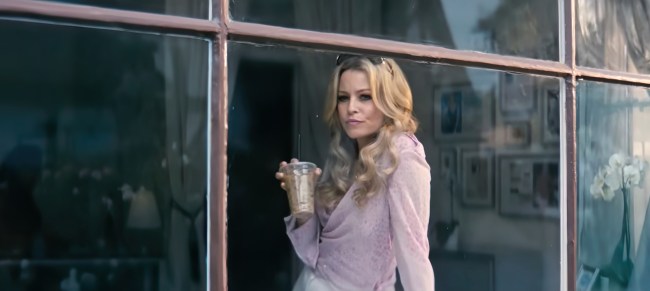Physical Address
304 North Cardinal St.
Dorchester Center, MA 02124
Physical Address
304 North Cardinal St.
Dorchester Center, MA 02124

“Skincare,” a gripping thriller starring Elizabeth Banks, now graces theaters with its mesmerizing portrayal of tension and ambition. The movie opens with Banks, playing the role of celebrity aesthetician Hope, engaged in a stress-laden makeup routine. This unsettling start rapidly spirals into what cinematographer Christopher Ripley describes as “unhinged momentum.”
Shooting the film in Hollywood over just 18 days was a feat, especially considering its 2013 setting, which required retro equipment to recreate the era. Director Austin Peters and Ripley were particularly drawn to this period of flux, brimming with intense and uncanny energy. “Hollywood was, as Austin described it, ‘fully torqued’ with disturbing yet highly charged vibes,” Ripley shared with IndieWire.
This atmospheric backdrop sets the stage for Hope, whose dreams of financial stability and fame are threatened by a new rival aesthetician. The escalating harassment compounds the tension, pushing Hope to her limits. Ripley emphasized that the cinematography’s “insidious undertones” were enhanced by the location: Crossroads of the World in Hollywood. This open-air mall historically housed filmmakers’ offices, including Alfred Hitchcock’s, and carries its own sinister past. “Ella Crawford built it in 1936 on the exact spot where her husband was fatally shot,” said Ripley. This historical layer added a palpable unease to the film.
Practically, Crossroads of the World provided the perfect setting with two offices facing each other, fulfilling the need for Hope to be continually confronted by her new rival, Angel. “We didn’t want it stitched together from different locations. The oppressive energy had to be felt,” Ripley explained. The lighting played a crucial role, with the oppressive pink neon glow from Angel’s signage subtly infiltrating Hope’s space, symbolically encroaching on her life.
Authenticity was paramount, with meticulous efforts to recreate the era’s sodium-vapor streetlights, since their unique orange tint had largely been replaced by LEDs. “We rigged these fixtures onto buildings to ensure period accuracy,” Ripley revealed. “This peculiar sheen added a layer of weirdness to the glamorous Hollywood world, doing oppressive things to the skin tone.”
One of the movie’s key scenes occurs in a motel room, available to the crew for just one day, where the audience learns more about the antagonist behind Hope’s distress. Ripley and his gaffer, Mathias Peralta, used specialized bulbs to allow for 360-degree filming. This scene’s aggressive choreography, reminiscent of Travis Bickle, was captured by camera operator George Bianchini, who fully immersed himself in the film’s seedy vibe.
“It was an insanely heightened, sleazy moment,” recalled Ripley. “We were watching from a tiny monitor in the bathroom, thinking, ‘We have something special here.'”
Source: IndieWire



